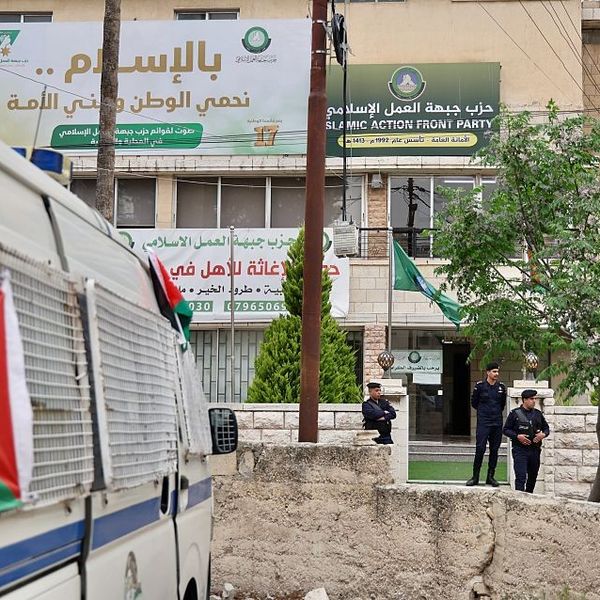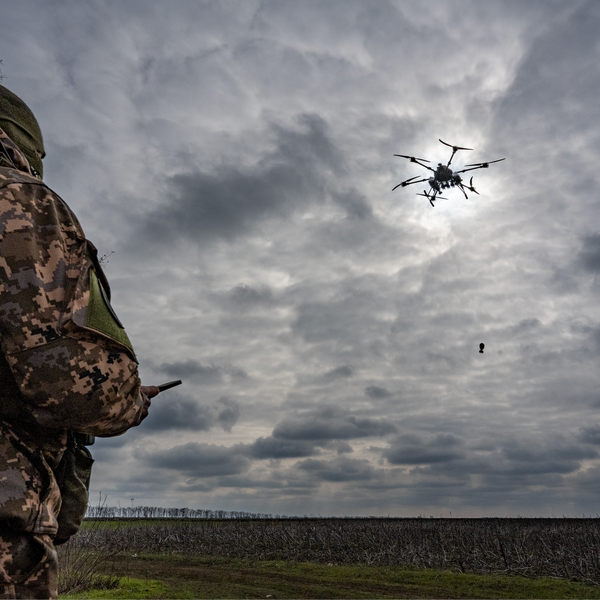President Trump took to Twitter this week, tweeting, "Hearing word that Russia, Syria and, to a lesser extent, Iran, are bombing the hell out of Idlib Province in Syria, and indiscriminately killing many innocent civilians. The World is watching this butchery. What is the purpose, what will it get you? STOP!"
The humanitarian disaster in Idlib has been deteriorating for months and follows a pattern that has become a familiar and effective strategy for Syrian President Bashar al-Assad as he continues his hold on power.
Dr. Timothy Russell served at the White House as the National Security Council's Director for Syria from 2014-2015 and writes about Turkey's opportunity to leverage its influence in Idlib.
The disaster that has unfolded in Idlib province since late April is sadly familiar: the Syrian military confines opposition fighters into one area, coordinates with Russian air assets, attacks civilian populations and hospitals under the ruse of fighting extremism in violation of a ceasefire agreement, and then gradually takes back opposition-held territory, killing hundreds of civilians and displacing tens of thousands more in the process.
The Assad regime’s use of this strategy to retake Homs, Aleppo, Eastern Ghouta, Dar’a, and other areas held by the opposition during Syria’s eight-year conflict, suggests that the only unknowns in Idlib are how long it will take the regime to retake the entire province, and at what cost to human life.
In some respects, events in Idlib are representative of the underlying dynamics to the broader Syrian conflict. Disagreement between the West and the Assad regime and its Iranian and Russian backers over Syria’s future, coupled with the West’s limited leverage on the ground, has enabled the regime to take what it will by force while the disjointed opposition increasingly resorts to extremist tactics.
But in other important ways, the struggle for Idlib is different, and the stakes for all actors involved are higher than they have been in previous battles. Alarmingly, the regime and its backers’ convergence of interests incentivizes them to take an aggressive approach on the ground. Assad sees an opportunity to control Syria’s entire north-south corridor and enjoy the trade benefits that would come from having an open border with Turkey. Russia faces a sudden need to reduce the threat from militants in Idlib to its air base in Khmeimim in neighboring Latakia province. And Iran sees an opportunity to consolidate Hizballah’s influence and its own, in the northwest. As for the armed opposition, the threat of losing its last swath of territory other than the Syrian Democratic Forces-controlled northeast, will impel moderate and radical groups to work together on the battlefield to resist regime incursions.
The actor with the strongest incentive to try and alter what otherwise would be a horrific and protracted struggle, is Turkey. Ankara fears that a regime assault on Idlib could lead to an influx of hundreds of thousands of refugees into territory that it controls north of Idlib and, possibly, into Turkey proper. Ankara also worries that the fall of Idlib could spell the end of Turkish influence in northwestern Syria.
While Turkey’s interests in altering Idlib’s trajectory are clear, the most effective means for it to do so are not. Turkey will be tempted to try and stop the regime’s advance by increasing support to fighters aligned under the National Liberation Front (NLF). Indeed, NLF fighters since late May, have used TOW missiles and other new capabilities presumably provided by Ankara, to roll back regime gains in Kfar Nabouda and elsewhere. But whereas arming fighters may slow the regime’s takeover of Idlib, it will not prevent it. Nor will Turkey be able to translate its materiel assistance into control over the opposition. Ankara’s limited ability to shape Idlib’s evolving constellation of armed groups has been demonstrated by its failure to remove Hayat Tahrir al-Sham (HTS) fighters from the demilitarized zone that Turkey agreed to establish in September 2018. Bolstering militants’ ability to fight the regime will only prolong the violence, lead to increased civilian casualties, escalate tensions with Russia, and strengthen the resolve of Idlib’s most radical groups, which pose a growing threat to Turkish security.
A more effective way for Ankara to protect its interests in Idlib would be to use Turkey’s overall strategic value to Russia —rather than its ties to fighters in Idlib—as leverage in diplomacy with Moscow that is aimed at renegotiating the September 2018 ceasefire agreement. For its part, Russia needs Turkey to continue participating in the Moscow-led Astana talks on Syria’s future, to give legitimacy to the initiative and to advance Moscow’s narrative that Russia—unlike the West—is capable of stabilizing countries. Russia also will need Turkish assistance with reconstruction across northern Syria in the future. Outside of Syria, Russia needs Turkey to complete the purchase of Russia’s S-400 missile defense system, which Moscow judges will advance its goal of rupturing U.S.-Turkey relations. Russia also needs Turkey to continue importing its natural gas and to soon serve as a hub for Russian gas that is bound for Europe.
These constitute levers that Ankara could pull in order to negotiate a new ceasefire agreement that could allow the regime to retain control of areas in southern Idlib that were seized in late April in return for Russia and Iran allowing Turkey to assume control of—and pressure Kurdish YPG elements in—Tel Rifaat. Further elements of a new ceasefire could include pledges by Turkey and Russia to strengthen the mechanism for monitoring violations throughout Idlib, increase intelligence cooperation to identify HTS elements for joint targeting, and expand the demilitarized zone to include portions of Idlib’s major highways. Turkey could also pledge to cease providing support to Idlib commanders who have worked with HTS and curtail business ties to HTS-linked entities in Idlib in exchange for guarantees that Russia and the Syrian military will not target hospitals.
Such an arrangement would not be easy to maintain given the many potential spoilers on the ground in Idlib. Nor would it change the fact that the Assad regime will, sooner or later, take all of Idlib. But it would reduce the potential for mass casualties in the near-term and provide space in which a more durable, negotiated arrangement on Idlib’s future—one that should involve Turkey-backed civilian actors in the province—could emerge.
The September 2018 Sochi deal is evidence that Turkey and Russia, despite their competing visions for Idlib, can reach a modus vivendi there that is capable of reducing casualty rates and serving as a basis for political discussions. Although the United States lacks leverage on the ground in Idlib, it can and should push Turkey to begin negotiations with Russia on a new ceasefire that can prevent Idlib from becoming the next Homs, Aleppo, Eastern Ghouta, or Dar’a.
What's your POV? Click below to tell us what you think.
Read more in The Cipher Brief...












